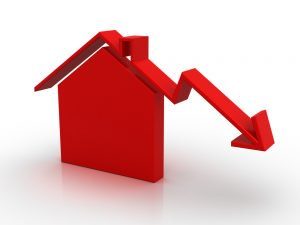
CoreLogic’s July Loan Performance Insight Report [1] revealed that 3.8% of home mortgages were in some stage of delinquencies—down from 4.1% last July and the lowest July figure in more than 20 years.
Historically, the share of delinquent mortgages in July peaked in 2010 at 11.1%. The overall delinquency rate since March 2018 for each month has been lower than during the pre-crisis period of 2000 through 2006, when the rate average 4.7%.
The serious delinquency rate, which is defined as 90 days or more past due, including loans in foreclosure, was 1.3% in July. That is down year-over-year from 1.6%, and was also lower than the 1.5% average from the pre-crisis period of 2000-2006.
The foreclosure inventory rate—the share of mortgages in some stage of the foreclosure process—was 0.4% in July, which is down from July 2018’s 0.5%. CoreLogic states that rising home prices have led to record amounts of home equity, reducing the risk of foreclosure.
Mortgages that were 30 to 59 days past due was 1.8% in July—a slight decline from 1.98% in July 2018. The share of mortgages 60 to 89 days past due was 0.6% and unchanged from last year.
Also seeing a decline was the share of mortgages entering delinquency, with just 0.8% of mortgages no more than 30 days delinquent. The 30-to-60 day transition rate fell from 15.1% in July 2018 to 13.8% in July 2019.
Mortgages delinquent 60-to-90 days fell from 25.3% to 24%. Mississippi led the nation with the highest share of mortgages 30 days or more delinquent at 7.3%. Colorado had the lowest rate at 1.7%.
Just four states posted annual increases in their overall delinquency rate: Vermont (+0.5%); New Hampshire (+0.2%); Minnesota (+0.1%); and Iowa (+0.1%).
The New York metro had the highest share of mortgages more than 30 days delinquent 5.1%.
A recent article in the New York Post [2] said New York’s struggles are similar to that of California, and it should look no further to California for solutions.
The Post said compared to New York’s “misguided policies,” California has conducted a debate on the issue and has taken “sensible steps” to alleviate the challenges.
Erik Kober of the Post said California legislators have also advocated for accessory dwelling units, or additional units within existing homes on lots zoned for single-family properties.